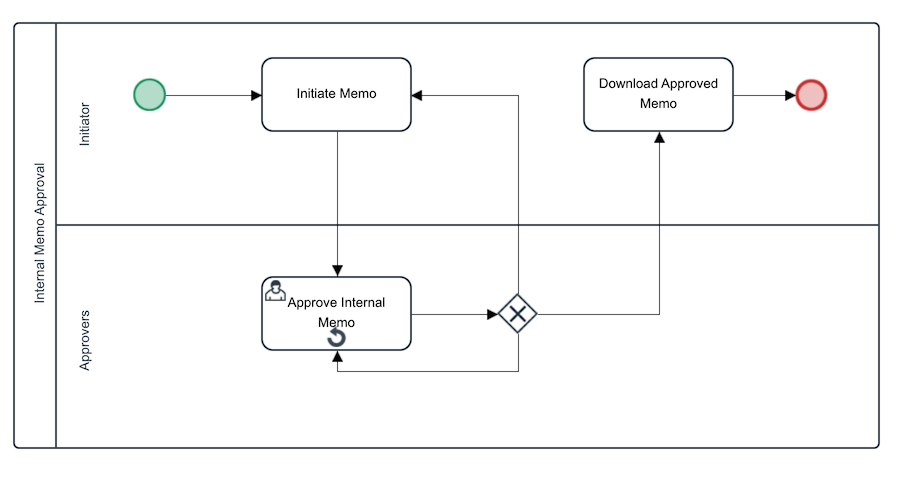In every structured business today, a lot of work revolves around getting the right approvals before something is done. This could be as simple as an approval to reimburse an expense or as critical as changing company operational policies.
For organisations that do not have an approval workflow system, their work is more complicated. Employees first have to type or print out the approval request, and then track down the necessary approvers to sign off. That is assuming they know who is authorised to approve the request in the first place. In this case, the very first step will be to invest in a good approval workflow solution.
Companies that have embraced digital transformation have in place approval workflow systems that enable employees to request for approvals from the comfort of their desks. They simply log in to the system and initiate the request. Depending on the system deployed, the system can automatically determine who in the organisation is authorised to grant the approval.
A prospective client’s concern
On a recent discovery call with a prospective client for our approval workflow solution – ProcessMaker BPM, the contact had a question that prompted this article. Below is the question paraphrased
I mean on an ongoing process as an example, let’s say you requested for an approval from your line manager, but he wants to get more information from two other people before he approves, can the system allow him to add these people or get their comments before he approves or rejects? Can ProcessMaker do this?
A prospective client’s question
The simple and straight forward answer to the above question is an emphatic “YES!”. Before asking the question, he had seen the video below of a demo of an Internal Memo approval workflow shared with him ahead of the presentation.
Ease of customisation of the approval workflow system
However, the beauty of the solution was that we not only answered yes to the question, but the pre-sales engineer was also able to customise the process to demonstrate the capability of the system in a matter of hours.

When on the market for an approval workflow solution, it is important to keep ease of customisation as a major deciding factor. One of our clients had so much trouble customising their previous solution in which they had invested over a million dollars. Without this agility, the business was unable to respond rapidly to changing market environments.
Improving the process
Having said that, let us return to the main point of our discussion. Like our prospective client above, already have an approval workflow solution and are wondering how it can be improved by requesting feedback from others to help approvers make informed decisions.
The simple and straightforward approach
The simple approach would be to give the approver an additional option. In addition to the “Approve” and “Reject” buttons, we will add a “More Info” button. On selecting this option, the approver will be shown a list of departments in the organisation. On selecting the desired department, she will be able to select the employee from which to request the information.
Once the appropriate employee is chosen, the approver simply enters the question for the employee and submits the form. The approval workflow process then pauses the current approval flow and routes the request to the employee selected.
The employee receives a notification, logs into the approval workflow system and provides the necessary information. On submission, the question and response are added to the comment trail of the approval request and sent back to the requesting approver who can then make her decision.
Taking it a bit further
Because we are obsessed with continuous improvement as an organisation, one of my colleagues asked a question about another possible scenario that the client might not have thought about.
How do we handle a scenario where the client does not want the employee from which the additional information is being requested to have any access or information about the main approval workflow case?
Question from our Director of Operations
To help you better understand the question, let me give an example. Let us assume the approval workflow request being authorised was for investigation of fraud, or a request for a confidential client. The management officers working on the approval will want to ensure all access to the case on the system was on a need-to-know basis.
By taking the approach above, while the employee from which the information was requested might not have the details of the approval, he or she would still be able to see generic information like the title of the request, and the case history showing which employees had worked on it.
Sub-processes to the rescue
To address this challenge, we realised that by using a sub-process, we could separate the additional information request from the main approval workflow request, thereby maintaining the required confidentiality. Instead of routing the request to the employee, the approval workflow process triggers a new request on the Information and Enquiry sub-process. When the information is provided in the sub-process and the employee submits the request, the main request is updated as before.
As you can see, there is no limit to how much improvements you can make to a process as long as you have the right solution and partner. I would like to hear from you in the comments on how the approval workflow process in your organisation works and what ways you are continually improving the process.
Photo by Christina @ wocintechchat.com on Unsplash





